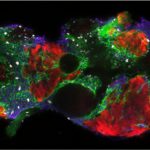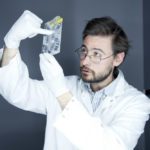Friday 22th January — at 12.00 — Amphi Monod (Bât.66)
Invited Speaker : Guillaume Bourque
From Assoc. Professor, Department of Human Genetics, McGill University,
Director of Bioinformatics, McGill University & Genome Quebec Innovation Center
Hosted by Pablo Navarro
Abstract : We studied the genomic locations of three key regulatory proteins (OCT4, NANOG and CTCF) in human and mouse embryonic stem (ES) cells. In contrast to CTCF, we found that the binding profiles of OCT4 and NANOG were drastically different with only ~5% of the regions homologously occupied. We showed that transposable elements, and in particular endogenous retroviruses (ERVs), have contributed up to 25% of the bound sites in both species and have wired new genes into the core regulatory network of ES cells. Additionally, we also reported that in human ES cells, the long terminal repeats of HERVH, a primate-specific ERV, function as enhancers. We also showed that HERVH is an expressed nuclear long noncoding RNA that associates with OCT4, co-activators and various mediator subunits, which is required to maintain human ES cell identity. Together, these results have revealed a new role of species-specific transposable elements in hESCs and indicate that species-specific ERVs have profoundly altered the transcriptional circuitry of ES cells. To further characterize the role of ERVs in the evolution of primate ES cells, we have recently been profiling the epigenome of various primate iPSCs including cells from gorilla, chimpanzee, rhesus and of course human. Using these data, we show the broad impact that ERVs have had on the transcriptional landscape of primate ES cells.

